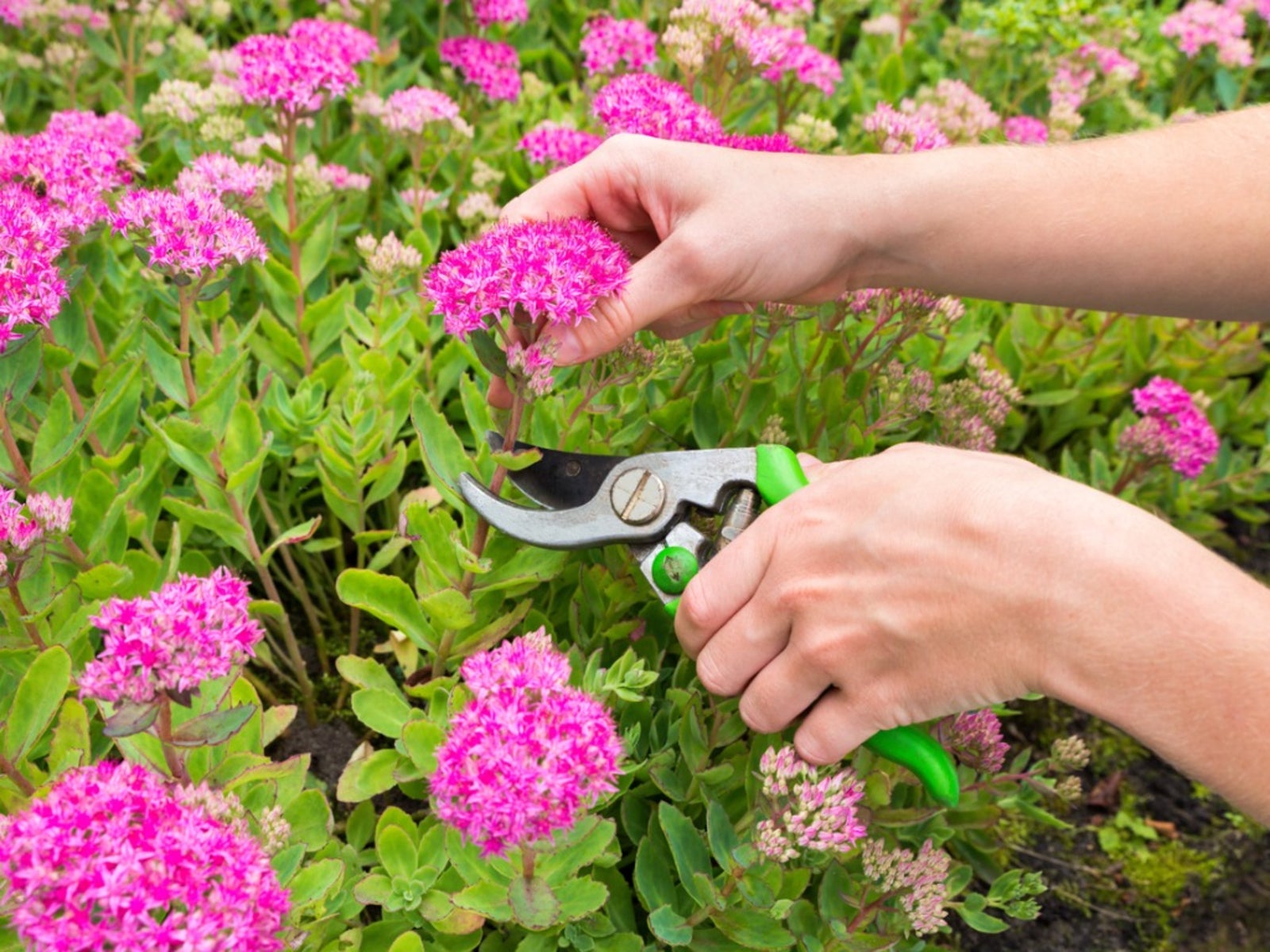Sedum Plant Pruning: Tips On Cutting Back Sedum Plants


I consider sedums my “go-to” lazy gardener plant. In most cases, they can simply be planted and then forgotten, with the exception of occasional watering. Can you cut back sedum? You can certainly contain the growth of sedum plants with careful pinching and trimming but it isn’t necessary to the plant’s healthy growth.
Removing the spent flower heads will make for a more attractive plant and allow new growth to appear unimpeded. Some tips for how to trim sedum can have you producing more healthy plants with showy blooms.
When to Prune Sedum
Sedum plants are in the family Crassulaceae and are considered easy to grow succulents in most regions. There are many sizes and varieties from which to choose, providing an ideal shape for almost any gardening endeavor.
Cutting back sedum plants is not strictly necessary unless they are getting wild and out of control. If you require a very tidy appearance, sedum plant pruning can control errant growth and enforce thicker plants in some cases. It can’t hurt the plant but knowing when to prune sedum plants can help preserve the starry flowers produced by most species. In warmer climates, you can prune sedum at any time without harming the plant’s vigor.
However, most pruning is done to remove the old flower heads and to keep the plant in check. If you prune late into summer, you may risk removing future flower heads on some of the slower growing species. Old flowers can be removed at any time.
On some of the larger species, such as Autumn Joy stonecrop, the flower head is an attractive feature and will last into winter. You can remove these in the fall or wait until early spring and then remove them to the rosette base.
In cooler regions, the foliage will die back and form sweet little, new rosettes in spring. It helps this new growth emerge by cutting back sedum plants to the new growth and also forms a more tidy plant.
Gardening tips, videos, info and more delivered right to your inbox!
Sign up for the Gardening Know How newsletter today and receive a free copy of our e-book "How to Grow Delicious Tomatoes".
How to Trim Sedum
Some of the creeping or trailing smaller varieties may get rangy. You can remove the stems with clippers or pruners or simply pinch them off. The jointed stems of some sedum will simply pull right off and can be planted for new plants if you wish. For taller species, cut them back in May to early June for a bushier plant. This will delay flowering but will form a more compact succulent.
Remove stems by ½ to force horizontal growth. Be careful not to damage side buds and remove only the vertical, taller plant material. You can remove dead or diseased plant material at any time. Most of it will simply break off. Other sedum plant pruning can take up to 1/3 of growth at any time but, again, it may affect the bloom time.
Tips for Sedum Plant Pruning
Sedums are remarkably tolerant plants. They don’t have many pest or disease issues and tolerate partial to full sun locations in well-drained soil. They are even drought tolerant. However, fungal diseases and rot do plague them, especially in low light situations and high humidity. Sterilize your cutting tools to prevent passing fungal spores into the plant. Use tools that are sharp to prevent excess plant damage.
Avoid pruning in the middle of winter or in extreme heat when plants are stressed. Sedum plants are practically designed for casual care and are very forgiving of most types of treatment. With a little practice, you should be able to enjoy the plants and their progeny for years and years.

Bonnie Grant is a professional landscaper with a Certification in Urban Gardening. She has been gardening and writing for 15 years. A former professional chef, she has a passion for edible landscaping.
-
 Zinnias On Repeat: 10 Glorious Cut-And-Come-Again Varieties For Endless Summer Bouquets
Zinnias On Repeat: 10 Glorious Cut-And-Come-Again Varieties For Endless Summer BouquetsThese zinnia varieties keep giving all summer, making them the perfect choice for dedicated cutting gardens – or just the occasional homegrown bouquet.
By Ellen Wells
-
 Create A Romantic Garden Straight Out Of Bridgerton: Regency Era Romance In Your Garden
Create A Romantic Garden Straight Out Of Bridgerton: Regency Era Romance In Your GardenTry some romantic garden ideas straight out of Bridgerton. Flowers and gardens in the Regency era were lush and charming and you can get the same look!
By Bonnie L. Grant